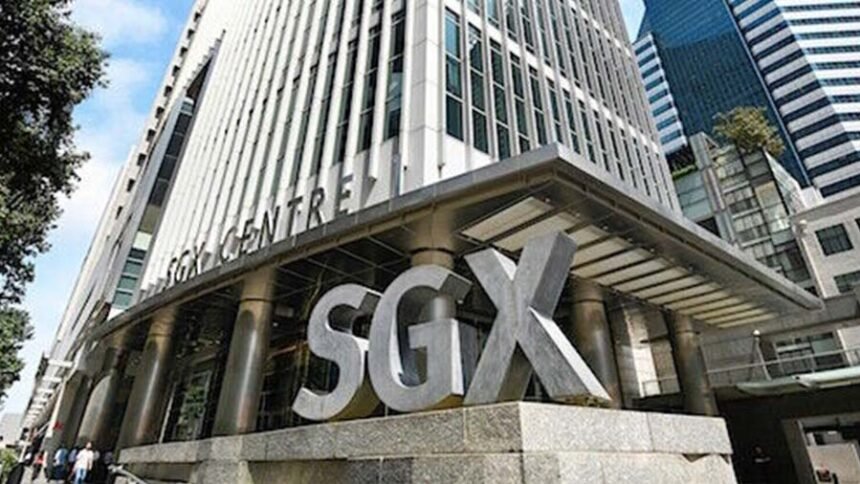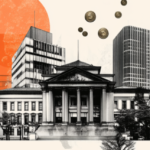- Why global capital is flowing into Singapore
- Telecom, Utilities, and REITs take center stage
- How Singapore’s leading yield stocks deliver more than just dividends
- A defensive shift away from cyclical sectors
- MAS policy moves support yield strategies
- Historical resilience during volatile markets
- Resilience amid global realignment
As global trade tensions escalate and new tariffs are rolled out, Singapore’s high-yield stocks have emerged as a preferred destination for investors seeking stability. While equity markets worldwide are bracing for volatility, sectors like telecommunications, infrastructure, and real estate investment trusts (REITs) in Singapore are drawing increased capital due to their defensive nature and stable dividend payouts.
This growing appetite for yield comes at a time when geopolitical uncertainty, inflation sensitivity, and uneven policy responses are reshaping how investors allocate capital, especially within the Asia-Pacific region.
Why global capital is flowing into Singapore
Singapore’s macroeconomic stability and regulatory consistency continue to reinforce its appeal as a financial haven. The Singapore dollar, for instance, has appreciated approximately four percent against the U.S. dollar in 2025, offering relative protection amid global currency swings. Additionally, the Straits Times Index (STI) posted a year-to-date return of 1.18 percent as of late April, reflecting moderate but steady growth even as other markets waver.
Investor confidence is also visible in the ETF space. Assets under management in Singapore-listed exchange-traded funds reached an all-time high of S$13.3 billion (US$9.82 billion) by the end of January 2025, as both institutional and retail investors turned to diversified, income-focused instruments to buffer against uncertainty.
Telecom, Utilities, and REITs take center stage
Among the key performers in this high-yield rotation are Singapore’s large-cap telecoms and infrastructure providers. Singtel, for example, remains a reliable dividend counter, forecast to yield 2.9 percent in 2025, down from 6.4 percent in 2024, but still attractive relative to global benchmarks. NetLink NBN Trust, backed by recurring infrastructure revenues, is expected to deliver a dividend yield of 5.5 percent in 2025, reinforcing its role as a steady income provider.
In the utilities sector, Sembcorp Industries continues to perform well, driven by its energy transition strategy and asset-light model. It is projected to yield 3.62 percent in 2025, reflecting continued dividend growth.
Meanwhile, REITs remain foundational to the high-yield thesis. CapitaLand Integrated Commercial Trust offers an estimated 5.08 percent yield, while Mapletree Logistics Trust is forecast to yield 6.9 percent, up from 5.5 percent in 2024, evidence of resilience and investor confidence in logistics-focused assets.
How Singapore’s leading yield stocks deliver more than just dividends
Singapore’s high-yield sectors are not just delivering steady dividends — they also reveal the strategic strength of their underlying business models. For instance, Singtel’s payout ratio has averaged above 70 percent over the last five years, indicating consistent returns to shareholders even amid restructuring efforts. As the group pivots to digital services and regional growth opportunities, its legacy infrastructure ensures a robust revenue base that supports dividends, even during downturns.
NetLink NBN Trust, a dominant player in fiber broadband infrastructure, boasts an enviable dividend stability. Its regulated asset base provides predictable cash flows, and its dividend yield of 5.5 percent in 2025 reflects long-term service contracts and limited market competition. For institutional investors seeking predictable income, NetLink has become a preferred counter.
Sembcorp Industries has emerged from its traditional utility roots with a sharpened focus on renewables and decarbonization. With a projected yield of 3.62 percent in 2025, the company’s dividend trajectory is supported by its strategic shift toward solar, wind, and waste-to-energy projects across Asia. Its asset-light model and strong balance sheet have turned it into a key pick for ESG-aligned portfolios.
CapitaLand Integrated Commercial Trust and Mapletree Logistics Trust continue to anchor the REIT segment. The former focuses on prime retail and office assets with strong footfall, while the latter has capitalized on Southeast Asia’s e-commerce boom. With yields above five percent, both REITs maintain high occupancy rates, disciplined debt management, and long WALEs (weighted average lease expiries), providing investors with security and visibility.
A defensive shift away from cyclical sectors
In contrast to these stable performers, cyclical stocks such as banks and tech have seen softer demand. Uncertainty around interest rate movements and the uneven impact of tariffs on global supply chains have prompted investors to reduce exposure to more volatile sectors.
Research by UOB Kay Hian supports this reallocation trend. The firm’s analysts remain bullish on Singapore REITs, citing attractive distribution yields of six to seven percent, particularly in suburban retail and data center segments. These segments have proven to be more immune to macroeconomic shocks and interest rate changes.
MAS policy moves support yield strategies
In response to a challenging global outlook, the Monetary Authority of Singapore (MAS) eased its monetary policy in April 2025, adjusting the slope of the Singapore dollar nominal effective exchange rate (S$NEER) policy band. This move is aimed at supporting growth while keeping inflation in check. MAS also revised its core inflation forecast down to between 0.5 percent and 1.5 percent, reflecting subdued price pressures — favorable conditions for yield-seeking investors.
This policy backdrop enhances the relative attractiveness of high-yield sectors. Lower inflation and steady currency performance allow REITs and utility stocks to preserve real returns, especially for foreign investors navigating more volatile domestic markets.
Historical resilience during volatile markets
Singapore’s high-yield sectors have consistently demonstrated resilience in past crises, adding to their appeal in today’s uncertain climate. During the global financial crisis in 2008, while equity markets slumped worldwide, Singapore REITs (S-REITs) were among the first to recover, thanks to government stimulus and strong trust-level governance.
A more recent test came in 2020, at the height of the COVID-19 pandemic. Despite severe disruptions to commercial real estate and travel, leading REITs bounced back within months. CapitaLand Mall Trust, before its merger with CapitaLand Commercial Trust, recovered over 80 percent of its pre-COVID valuation by the end of 2020, underscoring the rebound potential of high-quality assets managed under prudent strategies.
Telecommunications and utilities also proved defensive. Singtel saw only modest earnings compression and continued paying dividends throughout the pandemic, supported by stable demand for broadband and mobile data services. Sembcorp’s power and water businesses remained operational even during lockdowns, providing essential services and steady revenues.
These episodes have reinforced the reputation of Singapore’s high-yield counters as not only income generators but also durable investments in turbulent times. As new challenges like geopolitical realignment and inflation risks arise, the market’s historical performance offers investors valuable perspective and confidence.
Resilience amid global realignment
Singapore’s position as a top-tier financial hub and its defensive equity profile are converging at a time of global rebalancing. With trade relations uncertain and capital increasingly selective, the city-state’s high-yield stocks are not only a source of income — they are a form of stability.
Sector fundamentals, strong governance, and favorable monetary policy support this shift. As high-yield equities in Singapore outperform, they also serve as a benchmark for how regional markets can offer both returns and resilience.
About Us
ASEAN Briefing is one of five regional publications under the Asia Briefing brand. It is supported by Dezan Shira & Associates, a pan-Asia, multi-disciplinary professional services firm that assists foreign investors throughout Asia, including through offices in Jakarta, Indonesia; Singapore; Hanoi, Ho Chi Minh City, and Da Nang in Vietnam; besides our practices in China, Hong Kong SAR, India, Italy, Germany, and USA. We also have partner firms in Malaysia, Bangladesh, the Philippines, Thailand, and Australia.
Please contact us at asean@dezshira.com or visit our website at www.dezshira.com and for a complimentary subscription to ASEAN Briefing’s content products, please click here.





















